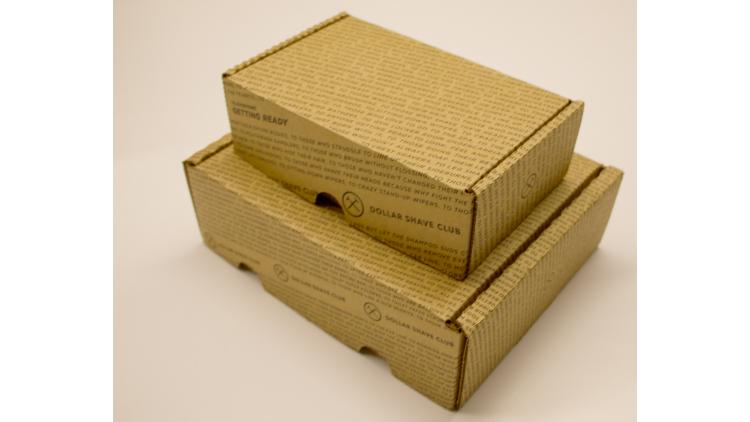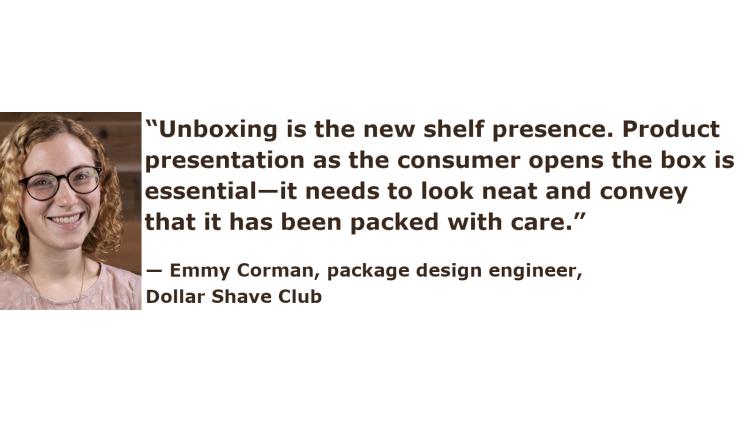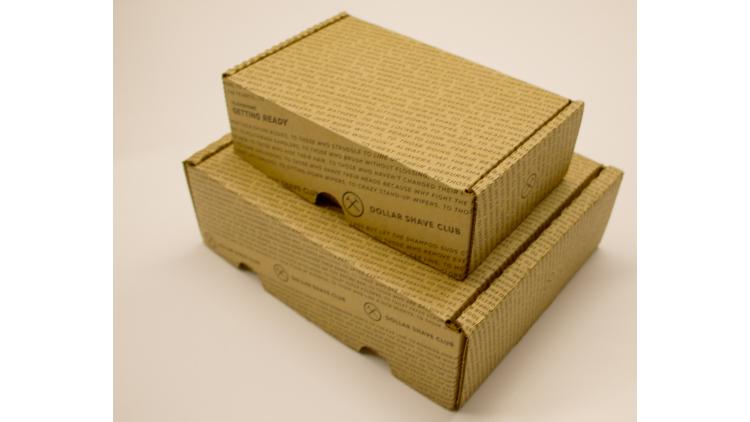The ecommerce channel is prime for promoting the circular economy, says Emmy Corman, package design engineer at Dollar Shave Club. And she’s got some ideas on how that can happen. But sustainability is just one of several challenges she sees for brands to up their ecommerce packaging game.
Corman says brands face at least three challenges when it comes to ecommerce packaging:
• To be less wasteful by using less materials or reusable packaging.
• To offer a new type of “shelf presence” with better graphics or branding; or to elevate the unboxing experience.
• To optimize returns via the small parcel shipping environment, which is a concern brick-and-mortar retailers don’t face.
Corman will participate in the panel discussion “Packaging for eCommerce’s Toughest Challenges” on Wed., Feb. 6, 1:00-1:55 p.m., at Center Stage (Booth 100) at WestPack 2019. Center Stage presentations are free to all attendees. Register now to attend. You can also view the full conference schedule.
Now, Corman explains how Dollar Shave Club engineers its packaging to address ecommerce supply chain challenges.
How can ecommerce packaging support the circular economy?
Corman: The take-and-dispose model is becoming less appealing to consumers. To a degree, recyclable packaging is already part of a circular packaging supply stream—as long as they are continuously recycled. Within the direct-to-consumer market, perhaps in the future, this type of system can be expanded so consumers can return their used containers for full ones with product.
How do packaging designers at Dollar Shave Club right-size their shippers and why is this so important? Can you give us a recent example? How does the strength of the corrugated board weigh in, especially as a potential cost saver?
Corman: It is very important to right size your product to the shipper. Not only does this prevent unnecessary voids that enable the product to move during transit, but it helps provide a neat unboxing experience. In our direct-to-consumer business, we always keep our shippers in mind. If a product doesn’t fit in our shipper, it is the same as creating a product that doesn’t fit on the store shelf.
While we were creating our Blueprint cologne we made sure that our 15-milliliter kits—some of which were sold as sets—would fit in our shipper efficiently. This meant balancing the size constraints of our shipper with the necessarily cushioning to keep our cologne intact.
Not all of our products are as fragile as glass cologne bottles, though. Our tube packaging is pretty robust, partially because tubes are fairly resistant to shock, we don’t have a high scuffing concern and because all of our tubes have induction seals. This means that we can save some of the overall shipping weight by using E-flute board instead of B-flute. Even though E-flute does not provide the same cushion as B-flute, we determined through testing that this wouldn’t hinder our product’s performance while in transit.

Printed shippers elevate a brand’s value to online consumers.
For ecommerce, the act of unboxing takes precedence over a primary package’s shelf presence. How should packaging designers use this to elevate the customer’s experience with the product and the brand?
Corman: I strongly believe that unboxing is the new shelf presence. Product presentation as the consumer opens the box is essential—it needs to look neat and convey that it has been packed with care. There are a few ways to achieve this, such as with paper or plastic trays, inserts for the product, wrapping product with tissue paper, placing the product in a bag or using unit cartons to help present the product in a premium way.
The unboxing experience is also a good chance to tie in some of the brand’s values, such as including post-consumer recycled content, ensuring that the paper is FSC (Forest Stewardship Council) certified and staying mindful to the amount of packaging that is necessary.
One method to elevate your brand and to enhance the unboxing experience is by adding color to the corrugated package, whether it is printed on the inside or outside of the shipper. Other methods include adding company branded tape, postcards or other marketing collateral within your box.

The typical printing on a kraft box doesn’t really say wow. What is Dollar Shave Club doing or investigating to improve the graphic pop of the shipping case? Or can/should that money be invested in other packaging functionality, like being easy to open?6
Corman: There is balance between aesthetics and functionality that depends on each brand’s values. At Dollar Shave Club, we prioritize the product and package functionality, then aesthetics.
Recently, we redesigned our shippers to add further communication to our members on the package. In the initial design, there was some concern about seeing the print tolerances. Through communication with our printer, we were able to adjust the design to minimize our print tolerances and maintain our communication goals. We were able to do this by creating flowing graphics with no hard start/stop points. This created a more robust design that could provide consistent appearance during all points of production. Reducing the visible print tolerances helped us refine our shippers to ensure all the focus would be on our communication.
How can brands minimize the number of product returns from ecommerce customers?
Corman: Straight-forward naming, detailed descriptions and honest product reviews can help the consumer determine what products are right for them. At Dollar Shave Club, we have an award-winning customer support team that is very knowledgeable of all our products and is always happy to help assist the consumer.
How can the ecommerce channel best implement reusable packaging and why should it?
Corman: Another way to think of reusable packaging is to think of it as re-fillable. If you sell a consumer a bottle of shampoo, you don’t necessarily have to ship them another bottle of shampoo. It can be more efficient to ship them a concentrate or shampoo in a refillable pouch. This will reduce shipping costs by saving weight and overall shipper size. The biggest challenge I foresee with this, is gaining the consumers’ confidence and support that the benefit to them and the environment offsets any inconvenience in receiving a product in a different format.
You interned at Amazon for three months before joining the Dollar Shave Club about three years ago. What was the main takeaway from your time with Amazon?
Corman: I was fortunate to intern at Amazon and, while I was there, I learned the importance of the warehouse team. I believe they are the foundation to the entire product experience. If they don’t store the products correctly or if they don’t pack them properly, there isn’t much an engineer can do. There is always the option to add more void fill, more cushioning and more support. However, this can lead to overpackaging. Overpackaging, by extension, is wasted cost. It is key to empower the warehouse team to realize that how they pack out the product can be the difference between a product arriving safely and a damaged, costly return.
I often learned about the package weakness by talking to my warehouse team. The staff on the floor had keen eyes for damage and I learned as much from them as I did from transit testing.
Interesting. Can you give us an example?
Corman: While I was at Amazon, my warehouse team showed me the importance of tape and the style of taping. They explained how some stock-keeping units (SKUs) can sit in the warehouse for months and the tape adhesive can lose strength—after a hot summer, for example.
They also showed me, for better or worse, how some tape styles are used as handles to maneuver the shipper. All of this information helps me as a package engineer create a shipper that is robust enough to survive the transit system, strong enough to retain strength while in the warehouse and designed in a way that is easy to move within warehouses.

